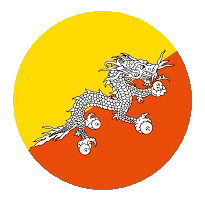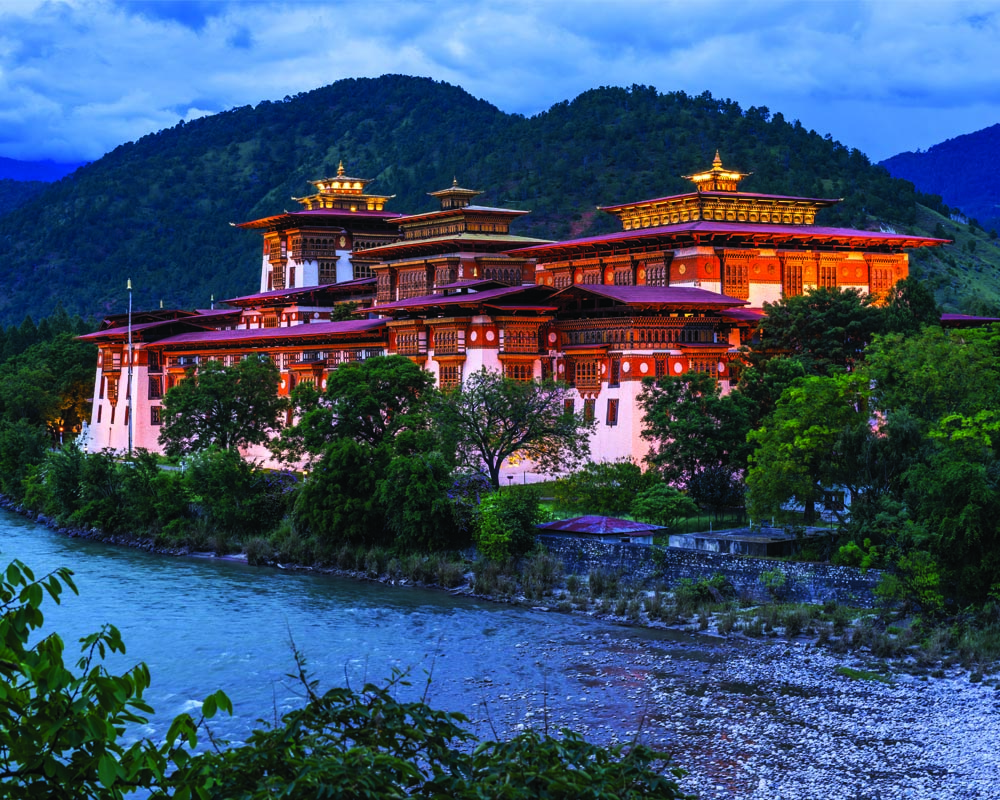Punakha Dzong, officially known as Pungthang Dewa Chhenbi Phodrang, meaning "the palace of great happiness or bliss," is one of Bhutan’s most significant and visually stunning fortresses. Located at the confluence of the Pho Chhu and Mo Chhu rivers, it was built in 1637–38 by Zhabdrung Ngawang Namgyal, the unifier of Bhutan. As the second oldest and second largest dzong in the country, it has played a pivotal role in Bhutanese history, serving as the former seat of government until the capital moved to Thimphu in 1955. The dzong remains an important administrative and religious center, housing sacred relics of the Drukpa Kagyu school of Tibetan Buddhism, including the revered Rangjung Kasarpani and the remains of Zhabdrung Ngawang Namgyal and Pema Lingpa, a highly respected tertön (treasure revealer).
Punakha Dzong’s historical significance extends to its role as the coronation site of Bhutan’s first king, Ugyen Wangchuck, in 1907, marking the establishment of the Bhutanese monarchy. The dzong is also deeply connected to Bhutan’s monastic traditions, serving as the winter residence for the Je Khenpo (Chief Abbot of Bhutan) and the central monastic body, who migrate from Thimphu during the colder months. Architecturally, it is a masterpiece of Bhutanese design, featuring towering whitewashed walls, intricately carved wooden balconies, and vibrant murals depicting Buddhist mythology. The dzong’s location at the river confluence makes it particularly scenic, especially during spring, when surrounding jacaranda trees bloom in shades of purple, creating a breathtaking contrast against its golden and red rooftops.
Despite its grandeur, Punakha Dzong has faced numerous challenges over the centuries, including devastating fires, earthquakes, and floods. However, through careful restoration efforts, it has been preserved as a symbol of Bhutan’s resilience, cultural richness, and spiritual heritage. Today, it continues to serve as a center for religious ceremonies and important national events, maintaining its deep-rooted significance in Bhutanese history and tradition.
Visitor Information
- Best Time to Visit: The ideal time to experience Punakha Dzong is during May, when the jacaranda trees surrounding the fortress are in full bloom, adding a vibrant purple hue to the scenery. Additionally, visiting during the Punakha Tshechu and Punakha Drubchen festivals, held in February or March, offers a deep dive into Bhutanese culture and traditions.
- Access and Entry: Access to the dzong may be restricted during certain periods, especially when monks are in residence or during specific ceremonies. It's advisable to check ahead regarding visiting permissions.
- Dress Code: Visitors are expected to wear modest attire, covering arms and legs, as a sign of respect when entering religious sites.
- Photography: While the dzong's exterior and courtyards offer ample photographic opportunities, be mindful of signage indicating areas where photography is prohibited, especially inside temples.
- Additional Attractions: After exploring the dzong, consider visiting the nearby Dzong Chung, which marks the site of the original dzong and houses a revered statue of Sakyamuni.
Punakha Dzong stands as a testament to Bhutan's rich history, spiritual depth, and architectural prowess, offering visitors a profound glimpse into the nation's heritage.


